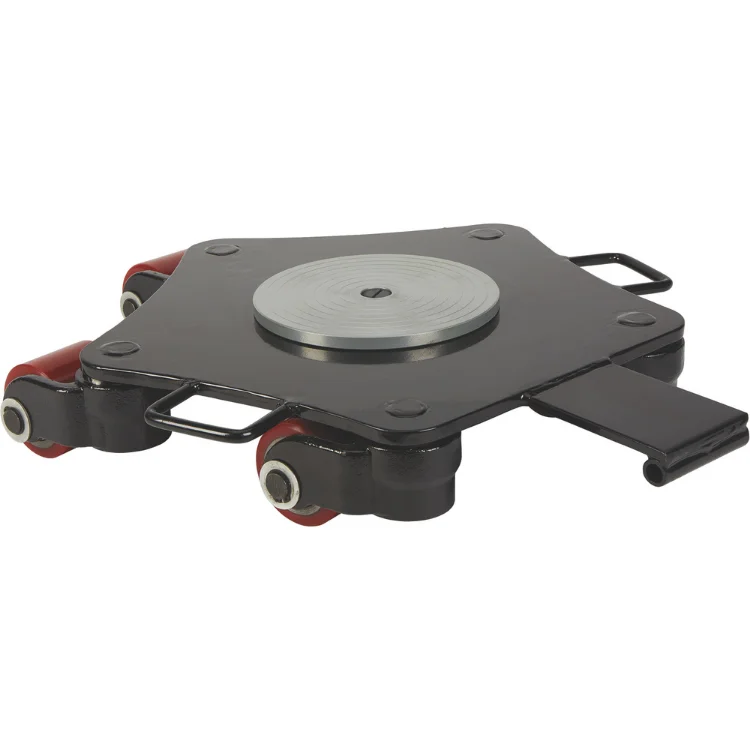Affordable Gantry Crane Cost Reduce Heavy Lifting Expenses
Understanding gantry crane investment requires examining several interconnected aspects:
- Primary cost factors determining gantry crane price structure
- How technical specifications impact long-term operating expenses
- Comparative analysis of leading manufacturers' pricing models
- Customization options affecting final investment decisions
- Operational methodologies reducing cost of moving heavy machinery
- Real-world applications demonstrating cost efficiency
- Strategic approaches for optimizing gantry crane acquisition

(gantry crane cost)
Breaking Down Gantry Crane Cost Components
Gantry crane expenses extend beyond the initial purchase price. Multiple factors collectively determine final expenditure:
- Capacity/Lifting Range: 20-ton capacity units average $50,000-$80,000 while 100-ton models exceed $250,000
- Structural Specifications: Single-girder configurations provide 25% savings versus double-girder alternatives
- Operational Systems: Manual controls represent baseline cost, adding radio controls increases budget 18-22%
Leading contractors report foundation preparation contributes 15-30% of total implementation expenses. Rail installation typically ranges from $500-$900 per linear foot. Project managers should anticipate these supplemental investments when planning equipment relocation budgets.
Engineering Impacts on Operational Expenditure
Technological integration significantly influences lifecycle costs. Units with regenerative power systems demonstrate measurable advantages:
| Feature | Standard Model | Advanced Model | Savings |
|---|---|---|---|
| Energy Consumption | 45 kW/hour | 32 kW/hour | 29% reduction |
| Maintenance Frequency | Bi-monthly servicing | Quarterly servicing | 50% fewer interventions |
| Component Longevity | 7-10 years | 12-15 years | 40% extended lifecycle |
Automation systems represent premium investments (adding 30-40% to base price) but deliver proven ROI through labor cost reduction. Shipyards implementing semi-autonomous gantry systems report 22% faster loading cycles.
Manufacturer Comparison and Pricing Tiers
Substantial cost variations exist between equipment providers:
| Manufacturer | Entry 20-ton | Mid 50-ton | Premium 100-ton | Lead Time |
|---|---|---|---|---|
| GlobalLift Solutions | $56,000 | $132,000 | $287,000 | 14 weeks |
| CraneTech Industries | $62,000 | $148,000 | $312,000 | 10 weeks |
| EuroCrane Systems | $71,000 | $161,000 | $325,000 | 8 weeks |
While European manufacturers typically command 15-18% premiums, their compliance documentation reduces installation approval timelines by 3-4 weeks. Industry data indicates North American suppliers offer more competitive terms for auxiliary services including commissioning (averaging 8-10% of purchase price versus European vendors' 12-15%).
Custom Configuration Financial Implications
Tailoring solutions affects budgeting substantially. Common modifications alter base pricing as follows:
- Climate Adaptation: Arctic operation packages increase cost 22-25% through specialized hydraulics
- Expanded Span: Each additional 15 feet beyond standard spans adds $18,000-$22,000
- Specialized Lifting Attachments: Magnet systems contribute $28,000; coil lifters $36,000+
Data analysis confirms modular designs provide superior flexibility. Fabrication plants utilizing modular gantry systems report 30% lower costs when reconfiguring work cells. The adaptability pays dividends when facilities require relocation or process modifications.
Operational Efficiency Case Examinations
Practical applications validate strategic investment approaches:
Case 1: Alabama automotive facility implemented two semi-gantry systems ($185,000 total) eliminating external rigging contracts. Annual savings reached $91,000 by internalizing heavy equipment transfers, with 16-month ROI.
Case 2: Norwegian shipbuilder's electrified rail system reduced generator fuel consumption by 2,300 liters monthly, offsetting 43% of installation expenses within two operational years while eliminating $300/hour crane repositioning labor.
Strategically Managing Gantry Crane Acquisition Costs
Optimizing gantry crane procurement requires multi-faceted planning. Final expenditures should reflect thorough operational analysis and forecasting of maintenance requirements. Industrial operations seeking efficiency improvements must consider complete cost of moving heavy machinery across the asset lifecycle, balancing initial investment against decade-long productivity gains. Smart purchasing decisions incorporate financing terms with preventive maintenance packages to stabilize operational budgets. Engineering partners agree specification accuracy remains paramount - properly sized systems avoid both costly over-engineering and hazardous capacity limitations. When operators implement comprehensive evaluation protocols before investing in material handling equipment, facilities consistently report superior long-term cost control.

(gantry crane cost)
FAQS on gantry crane cost
Q: What factors determine the gantry crane cost?
A: Key factors include lifting capacity, span length, height requirements, and power system (electric/hydraulic). Installation complexity, customization needs, and manufacturer location also impact final pricing. Basic models start around $15,000, while industrial units exceed $100,000.
Q: How does gantry crane cost compare to hiring moving services for heavy machinery?
A: Purchasing a gantry crane involves higher upfront costs ($15,000-$250,000+) but offers long-term savings for frequent moves. Professional heavy equipment moving services typically charge $150-$800/hour, making them cost-effective for one-time relocations but expensive for repeated use.
Q: What impacts the cost to move heavy equipment within a facility?
A: Distance traveled, equipment weight/size, floor conditions, and doorway clearances directly affect pricing. Disassembly/reassembly requirements and specialized rigging add $500-$5,000+. Safety protocols like structural reinforcements may further increase costs by 15-30%.
Q: Can gantry cranes reduce costs of moving heavy machinery regularly?
A: Yes, gantry cranes eliminate recurring contractor fees, reducing long-term expenses. They enable in-house teams to move multi-ton machinery safely for minimal operational cost after initial investment. Return-on-investment often occurs within 2-3 years for frequent moves.
Q: What are hidden costs when calculating total heavy machinery moving expenses?
A: Often overlooked costs include disconnection/reconnection of utilities ($200-$2,000), permit fees ($100-$1,500), structural modifications to pathways ($1,000-$15,000), and machinery recommissioning/testing. Insurance and potential production downtime add significant indirect expenses.
-
Dawei Hand Pallet Truck 1200mm, 2000–5000 KGS Heavy-DutyNewsNov.17,2025
-
Dawei Hand Pallet Truck, Fork Length 1200mm, 2000–5000kgNewsNov.17,2025
-
Large Equipment Movers – Safe, Insured & On-Time ServiceNewsNov.17,2025
-
Machine Moving Dollies | Heavy-Duty, Low-Profile, SafeNewsNov.17,2025
-
Permanent Lifting Magnet - Heavy-Duty, Safe, Quick ReleaseNewsNov.11,2025
-
PML 1000 Lifting Magnet - Heavy-Duty, Safe, No PowerNewsNov.11,2025
-
Large Equipment Movers: Safe, Fast, Certified ProsNewsNov.11,2025
